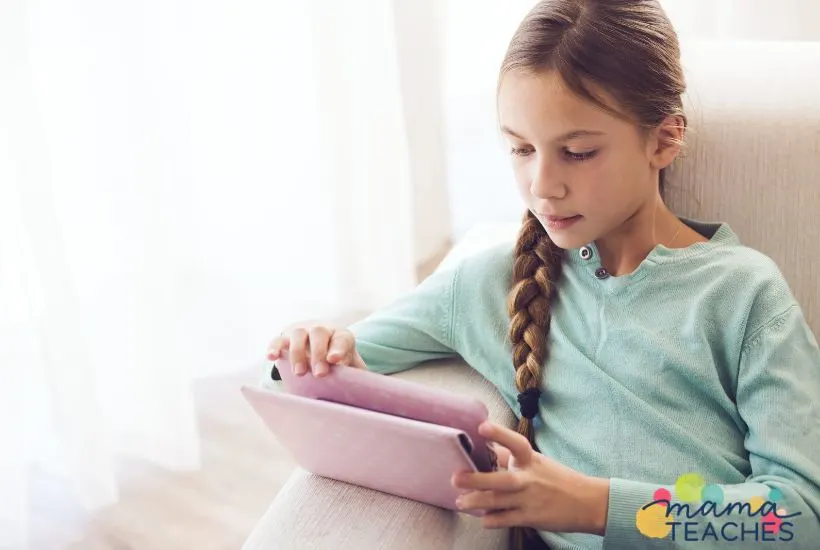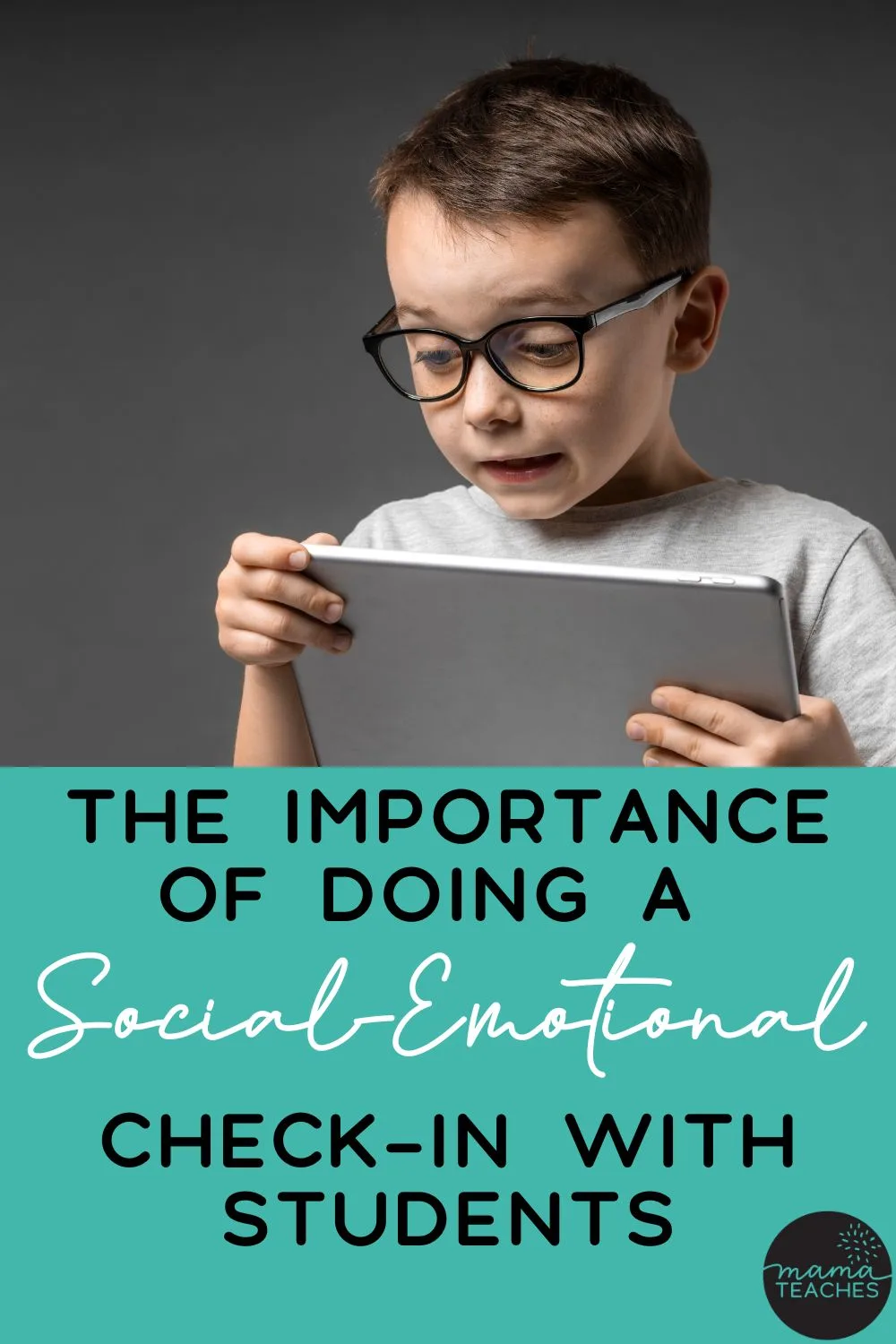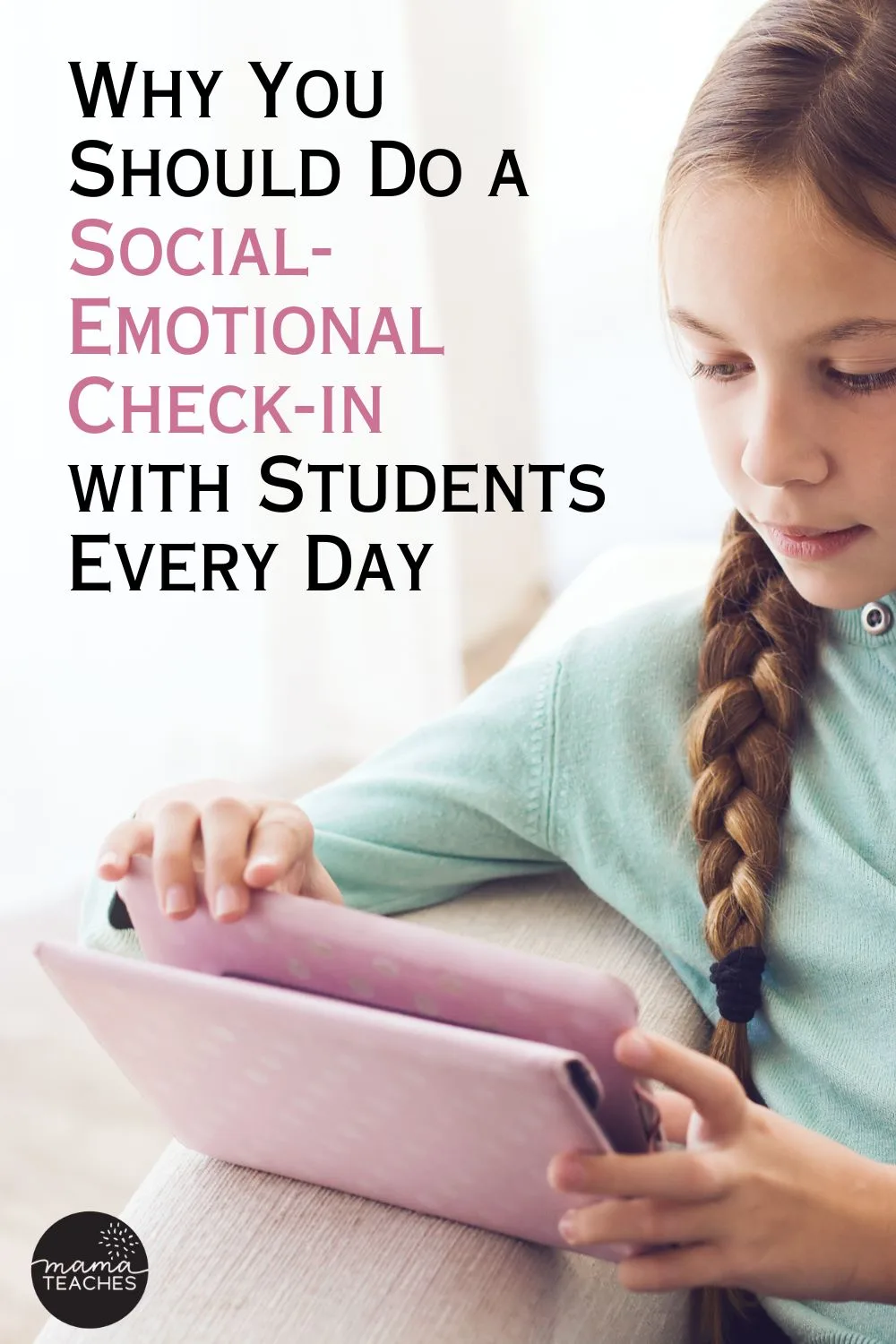A social-emotional check-in is quick, painless, and important. Find out the why and how of implementing a social-emotional check-in in your classroom.

What Is a Social-Emotional Check-In?
A social emotional check in is a way to take the temperature of your students’ current emotional states.
Are your students entering the classroom feeling excited, drained, anxious, optimistic, or frustrated?
It lets you know how each student is feeling, so you can determine if they are okay and ready to learn.

This article contains affiliate links to things that you might like.
Why It’s Important to Check In on Your Students
You’re a teacher–that means you care about kids.
They aren’t just receptacles waiting to be filled with knowledge; they are human beings.
By doing a social emotional check in, you will get to know your students, and you can find out who needs help.
This is not a distraction from learning.
Remember, social-emotional learning is the foundation for all education.
Without that piece in place, it is nearly impossible to learn math, science, or reading.
A social emotional check-in can also guide your SEL (social emotional learning) lessons.
By knowing what your students’ needs are, you can tailor your lessons to best help your students.
A social emotional check in also tells you exactly what your classroom environment is.
You need to know what you are dealing with on any given day.
Are many of your students feeling anxious?
Perhaps you can lower the anxiety in the room before you give a test or quiz.
Are they feeling hyper?
Plan some calming activities, like reading or deep breathing.
The key is to help students or help your child handle stress.

Ways to Hold a Social Emotional Check In
You can hold a social emotional check in a variety of ways.
The first decision: Do you want the information shared publicly or privately?
A public social emotional check in would involve raising hands or asking students to share their answers aloud.
A benefit to this method is that it is fast. It takes only a minute.
Private check-ins would involve written communication (paper or electronic) that goes directly to you.
The benefit of this is that students may share more honestly, and they are less likely to be influenced by others.
You also need to decide which social-emotional questions you wish to ask.

Emotional Check-In Questions
Emotional check-in questions will vary depending on the age of your students.
Young children don’t have the names for nuances of emotions.
High schoolers tend to have more complex, blended feelings.
With Google Forms, you can instantly track your students’ private answers.
Social emotional check-ins for elementary students should be quick and easy to understand.
You may even want to include graphic elements like emoji faces or colors (especially if you have pre-readers).
You can ask a simple and straightforward question like, “How are you feeling today?”
You can then have students select the appropriate color, picture, or word.
Stick with feelings that are simple to understand: happy, sad, excited, angry, tired, calm, and worried.
You can ask students to draw you a picture of how they are feeling, or ask if they have been sleeping and eating well.
Middle schoolers and high schoolers are capable of answering more reflective questions.
You may want to use the Mood Meter or another list of adjectives to help them name their emotions precisely.
Ask them to take a few deep breaths and note how they are feeling.
You can ask questions like, “What makes you feel excited or joyful?” or “Who do you talk to when you are feeling stressed?”
You can also ask, “Do you want to talk to me or another adult at the school about how you are feeling?”
Sometimes students would like to confide in a teacher or counselor, but they wait to be asked.

Easy Daily Check-Ins
Social emotional check-ins can be fast and easy (especially if you use digital forms).
They are a simple but effective tool to find out how your students are feeling so you can better teach them and, if need be, help them.
